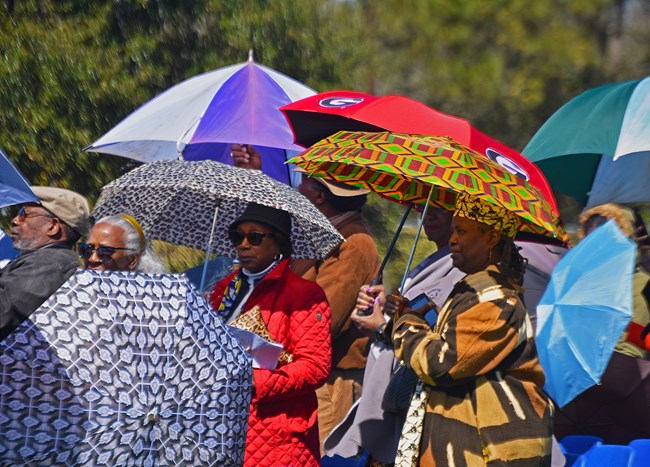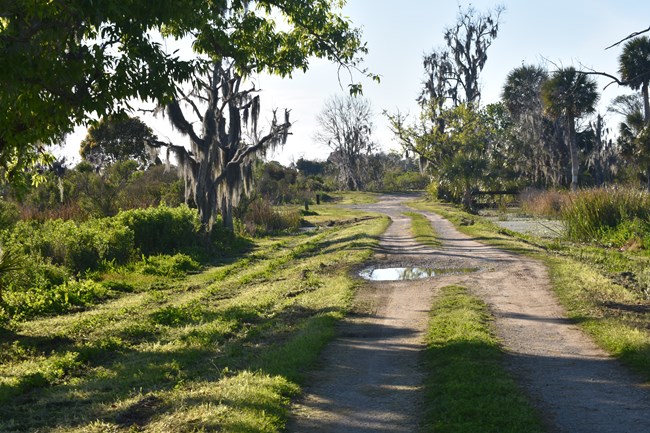Last updated: March 24, 2020
Article
Even God Wept: Gullah Geechee NHA Remembers The Weeping Time

Heather Hodges / Gullah Geechee Cultural Heritage Corridor
On March 2nd and 3rd, 1859, over 400 African American enslaved men, women, and children were sold on a racetrack in Savannah, GA under torrential rain. The sale was so painful, enslaved people and others remembered afterwards, that the skies opened and even God “wept.”
Gullah Geechee Cultural Heritage Corridor joined the Savannah community for a weekend of commemorative activities from March 6th to March 8th. A memorial service was held on March 7th, at the site of the sale. Attendees carried umbrellas and 436 chairs were set out to remember each of the individuals put up for sale. In the first official recognition of the tragic sale by the state of Georgia, State Senator Lester Jackson read a statement from Georgia Governor Brian Kemp at the service.
“The Weeping Time” was the largest auction of enslaved people in U.S. history, and was held so that slave owner Pierce Mease Butler could pay off his gambling debts. Butler, the grandson of one of the signers of the U.S. Constitution, Senator Pierce Butler, inherited half of his grandfather’s vast Georgia plantation. The family’s wealth was made possible through the efforts of the huge number of enslaved people who worked the rice and cotton fields. Over the many generations, those enslaved on the Butler Island plantation became very close, due to the fact that the Butler family had not sold or separated their enslaved workers.

Heather Hodges / Gullah Geechee Cultural Heritage Corridor
Those intent on purchasing people at the sale, or simply eager to watch, made enslaved people jump, parade around, and undergo physical examinations before bidding. Butler made an appearance towards the end of the sale to give some families a dollar, as thanks for their generations of enslaved work.
A New York Tribune reporter, disguised as a prospective buyer, observed the ordeal and later wrote a detailed article about it. The reactions to the reporter’s account of the sale further convinced those opposed to slavery of its immorality. Meanwhile the journalist received death threats from pro-slavery Americans, including public officials in the south.

Image Courtesy of Gullah Geechee Cultural Heritage Corridor
The Gullah Geechee NHA interprets the history of the Gullah Geechee people, including those sold during The Weeping Time, and their lives in coastal Florida, Georgia, South Carolina and North Carolina. The Gullah Geechee people are descended from enslaved Africans, and due to the isolated setting of the coastal islands and plantations they were enslaved on, the Gullah Geechee culture retains a unique language, arts, music and food culture grown from their African heritage.
Discover more news and stories from America's National Heritage Areas.
